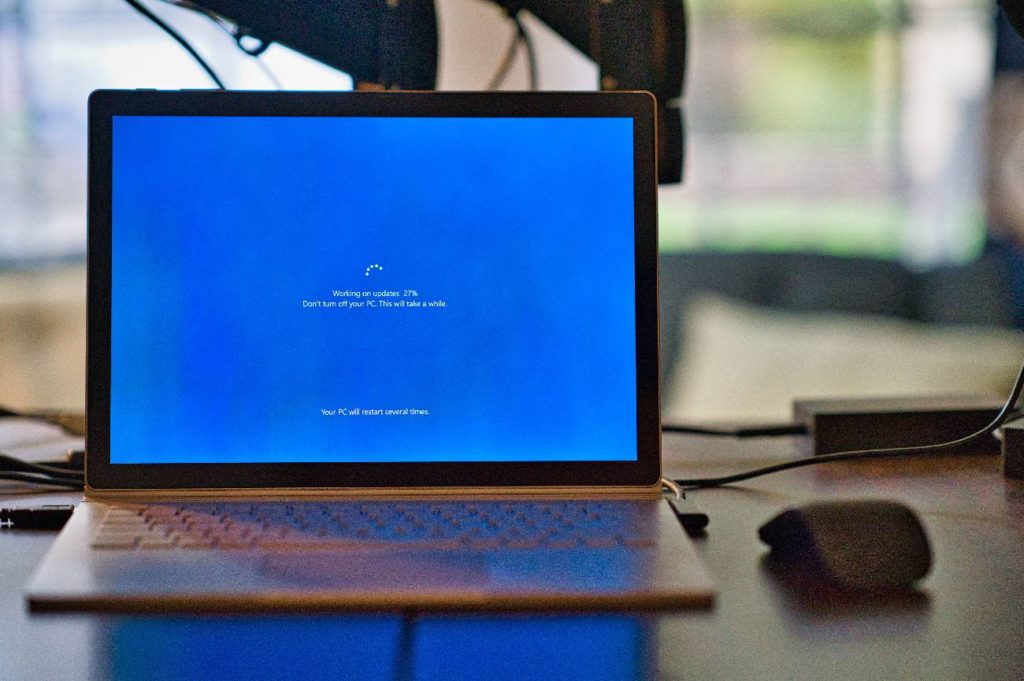Laptops are now a fundamental part of our lives and are one of the most widely used electronic gadgets worldwide. Teacher, front-end developer, or gamer, your work rate and even quality of life are enhanced with the help of a laptop. This means someone is looking to buy a laptop or change their old one at every point.
Laptops, and computers in general, work with an Operating System (OS). When buying a computer, people usually worry about what operating system they’d prefer on their laptop. This is why it is a shock to many to-be owners when they hear about a laptop without OS.
This article aims to educate readers on what a laptop without OS is all about, the advantages of getting a laptop without OS, and what to do after getting a laptop without OS.
Laptop Without OS
OS stands for Operating System. Operating systems are software that serves as overseers or coordinators for all other computer programs. An operating system serves as a link between the computer hardware and the software installed on the laptop.
Often, an Operating System comes along with your laptop. However, there’s the option of having a computer with no Operating System.
When a Laptop is without an OS, there is no Operating System pre-installed on it. In that state, it is just a box with different metallic parts as an operating system is required to bring the other laptop parts to life. Programs are usually unable to run since the system hardware and software cannot communicate.
While this is not commonly done, you can get a laptop without an Operating system, and as shocking as this might sound, getting a laptop without an Operating System has some merits. These merits are:
Cost
You might not know that manufacturers have to pay to use or pre-install these operating systems. The amount they pay reflects in the eventual prices of these laptops. Seeing as the pre-installed operating system might not be one you like, you’re stuck with the license of that operating system, alongside the extra cost.
For those who wish to avoid these costs, getting a laptop without OS is the way to go.
Control
Many manufacturers install several other applications on their laptops in an attempt to drive up revenue by attracting users to their software ecosystems. However, these practices use up your hardware resources and storage. Buying a laptop without OS gives you the liberty to determine precisely how your laptop storage is used.
Purpose of Purchase
The purpose for which you’re getting the laptop also plays a significant role in determining whether to get a laptop without OS or not. Gamers and some programmers need to build their laptops from scratch. This means they must be intentional about any software or application installed on their laptop.
For example, if one develops applications for an OS, using the same OS during development makes testing the application easier.
Hence it would be preferable for them to get a laptop without OS. On the other hand, academics might be comfortable with a laptop pre-installed with an Operating System.
Common Operating Systems

Examples of Operating Systems include:
Windows
This is perhaps the most common operating system used by laptops. It is a family of operating systems developed and marketed by the company Microsoft. The latest version of this operating system, Windows 11, was released in October 2021.
This operating system has an excellent GUI (Graphical User Interface) and supports many programs.
Linux
Linus Torvalds created this operating system in 1991. It might interest you that the Android platform is a modified version of the Linux Kernel and some other open-source software. This operating system consists of different pieces that serve different functions, including the Bootloader, Init System, Kernel, Daemons, Applications, Graphical server, and Desktop environment.
This operating system is challenging to hack. This is because it has a lot of distributions; hence more work is required before it can be attacked by malware.
Macintosh
This operating system runs on Apple desktops and laptops. It is a Unix operating system developed and marketed by Apple Incorporated. The macOS, as it is more commonly called, is known for being user-friendly and easy to use and has minimal compatibility problems.
Installing a New Operating System
After purchasing a laptop without OS, the next step is to install an Operating System since your laptop cannot function optimally without it. Here are the steps to follow in installing a new operating system:
Decide What Operating System to Use
If you purchased an Apple product, you’d use the macOS. However, you can consider the Windows Operating System or Linux if you did not. You also need to check your system requirements to ensure that your system is compatible. For example, most Windows programs require a minimum of 1GB RAM and about 15 to 20GB of memory.
To help you decide, you should know that Windows licenses are usually purchased, while most Linux distributions are generally available for free download. Software compatibility is also an essential factor to consider when deciding on an Operating System.
Data Back-Up
After obtaining your operating system on a disc or a bootable USB drive, you should back up your data. You can use an external drive or a disc.
Installation Disc or Drive
Insert your installation disc or drive and set your computer to boot from the disc drive. This is done in your Basic Input/Output System (BIOS), assessed by hitting the setup key for your computer. Wait for the setup to load after setting the disc or USB drive as the first boot device.
After all this, you will be required to input your product key if it is Windows. You can then choose your installation type and format your partitions.
Installation Completed
The final step is waiting for your installation to be completed. The time can vary depending on how fast your laptop is.
Final Thoughts
This article provides all the information you need regarding laptops without OS. After purchasing a laptop without OS, you can also install a new operating system, as the steps have been shown.
Regardless of the Operating System you choose, ensure that it is system compatible.
Frequently Asked Questions (FAQs)
There is no limit to the number of times you can change your operating system. Also, changing your Operating System frequently has no potential for harm in itself. However, some applications might malfunction if you change your laptop’s Operating System too often. Hence change your Operating System only when necessary.
An Operating System upgrade is an option suitable for people uncomfortable with the current version of the operating system. Upgrading your Operating system helps to enhance your laptop’s functioning ability and improves your security provisions. However, it would be best to consider that upgrading your operating system may also mean upgrading some software.

